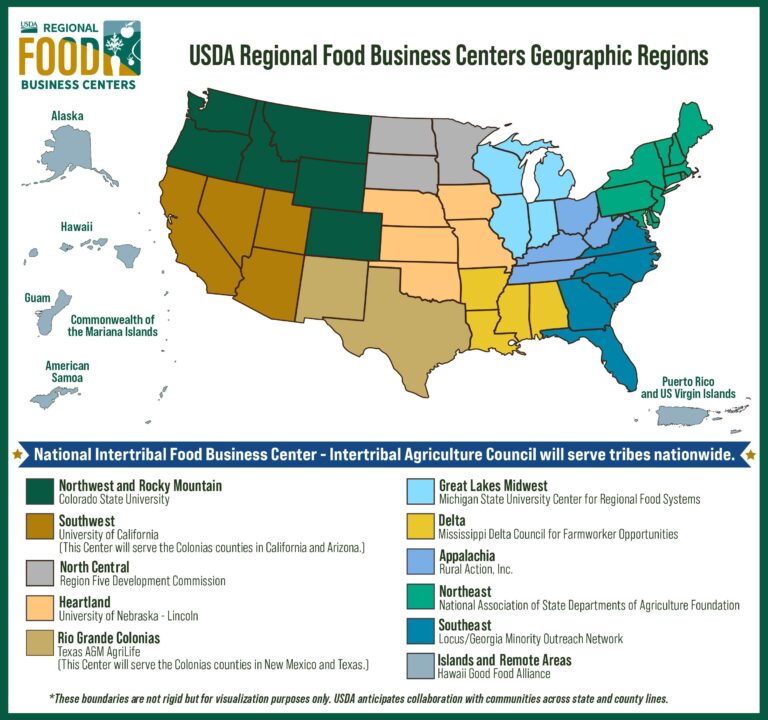The United States Department of Agriculture (USDA) offers a range of business programs designed to support and empower agricultural enterprises across the nation. These initiatives provide vital resources, funding opportunities, and technical assistance aimed at fostering growth and sustainability within the sector. As the agricultural landscape faces evolving challenges and opportunities, the USDA’s business programs play a crucial role in helping farmers, ranchers, and agribusinesses navigate market demands, expand operations, and innovate for the future. This article explores the latest offerings from the USDA, outlining how these programs contribute to strengthening the backbone of American agriculture.
Overview of USDA Business Programs Supporting Rural Development
The U.S. Department of Agriculture (USDA) delivers a range of robust business programs aimed at stimulating economic growth and enhancing the quality of life in rural communities. These initiatives offer vital support through grants, loans, and technical assistance to farmers, entrepreneurs, and rural business owners. Focused on sustainability and innovation, USDA programs prioritize projects that create jobs, improve infrastructure, and foster diversified rural economies. From agricultural business development to rural energy solutions, these resources equip stakeholders with the tools necessary to thrive in evolving markets.
Key programs within this support structure include:
- Business and Industry Loan Guarantees ‚Äď Facilitates access to capital by reducing lender risk, enabling expansions and modernization.
- Value-Added Producer Grants ‚Äď Encourages agricultural producers to enhance product value and reach new markets.
- Rural Energy for America Program (REAP) ‚Äď Provides grants and loans for renewable energy systems and energy efficiency improvements.
- Rural Microentrepreneur Assistance Program (RMAP) ‚Äď Offers financial assistance and training to small rural businesses and microenterprises.
| Program | Primary Benefit | Target Sector |
|---|---|---|
| Business & Industry Loan Guarantees | Capital Access | Rural Enterprises |
| Value-Added Producer Grants | Product Innovation | Agriculture |
| REAP | Renewable Energy Funding | Energy & Agriculture |
| RMAP | Microbusiness Support | Small Rural Businesses |
Key Eligibility Criteria and Application Process for USDA Funding
To qualify for USDA funding, applicants must primarily demonstrate that their business is located in a rural area, as defined by the agency’s latest criteria. Eligibility often extends to small businesses, agricultural enterprises, and rural entrepreneurs who can prove a positive community impact. Important factors include the ability to repay loans, solid business plans, and alignment with USDA priorities such as job creation, sustainability, and economic resilience. Additionally, most programs require applicants to provide comprehensive financial documentation and personal background checks.
The application process involves several critical steps designed to ensure transparency and thorough evaluation. Begin by selecting the most appropriate USDA program‚ÄĒranging from grants to low-interest loans‚ÄĒthen complete the official application form available on the USDA website. Applicants should prepare to submit detailed business plans, financial statements, and supporting certifications. Below is an overview of the typical application roadmap:
| Step | Description | Timeframe |
|---|---|---|
| 1. Eligibility Check | Verify business location and type | 1 week |
| 2. Document Preparation | Gather financials, plans, and certifications | 2-3 weeks |
| 3. Application Submission | Complete and send application online | 1 day |
| 4. Review & Approval | USDA assessment and decision | 4-8 weeks |
| 5. Post-Approval | Funding disbursement and compliance | Varies |
- Tip: Early engagement with USDA regional offices can speed up the process.
- Note: Keep copies of all submitted documents for your records.
Success Stories Demonstrate Impact of USDA Business Assistance
Entrepreneurs across the country have leveraged USDA business assistance programs to turn visionary ideas into thriving enterprises. From rural agribusiness startups to value-added food production, these programs have provided crucial funding, training, and technical support that empower small businesses to overcome challenges and scale operations. Success stories highlight diverse sectors benefiting from USDA support, including organic farming ventures that have expanded to national distribution and innovative bioenergy firms that have created sustainable jobs in their communities.
- Local Farm-to-Table Initiative: Received grants to develop infrastructure, boosting regional food systems.
- Rural Microenterprise Growth: Accessed low-interest loans to increase product lines and market reach.
- AgTech Innovation: Utilized technical assistance to commercialize precision agriculture tools.
| Business Type | Program Used | Impact |
|---|---|---|
| Organic Farm | Value-Added Producer Grant | 20% revenue increase, expanded to 5 states |
| Bioenergy Startup | Rural Energy for America Program | Created 15 new sustainable jobs |
| Local Craft Brewery | Microloan Program | Doubled production capacity in 18 months |
Strategic Recommendations for Maximizing USDA Program Benefits
To fully capitalize on USDA business programs, it’s crucial to align your enterprise goals with the specific criteria and priorities of each initiative. Start by conducting comprehensive research on the latest USDA funding opportunities and eligibility requirements, ensuring your applications reflect the agency’s focus areas such as sustainability, technological innovation, and rural economic development. Engaging with USDA representatives and attending program webinars can offer valuable insights and up-to-date guidance, positioning your business advantageously in competitive grant environments.
Additionally, establishing a robust internal framework for program management enhances long-term benefit realization. Implement these key strategies:
- Regular Monitoring & Reporting: Maintain detailed progress logs and financial records to meet USDA compliance standards and avoid funding delays.
- Collaborative Partnerships: Leverage local agricultural extensions, industry groups, and community organizations to expand resource access and program impact.
- Adaptive Business Planning: Be prepared to pivot operations based on evolving program priorities or market conditions, maximizing both funding and operational resilience.
| Strategic Aspect | Action Step | Benefit |
|---|---|---|
| Research | Review annual USDA program updates | Improved application precision |
| Networking | Attend USDA webinars and local workshops | Access to insider tips and contacts |
| Documentation | Implement thorough progress tracking | Compliance assurance & timely reporting |
| Flexibility | Update business strategy quarterly | Enhanced adaptability to funding changes |
The Way Forward
In summary, the USDA’s business programs continue to play a vital role in supporting agricultural enterprises and rural economies across the United States. By offering a range of financial tools, technical assistance, and resources, these initiatives aim to foster growth, innovation, and sustainability within the sector. As challenges such as market fluctuations and environmental concerns persist, USDA business programs remain a critical component in helping farmers, ranchers, and rural businesses navigate the complexities of today’s agricultural landscape. For those seeking opportunities to strengthen their operations, understanding and leveraging these programs could prove essential to future success.




